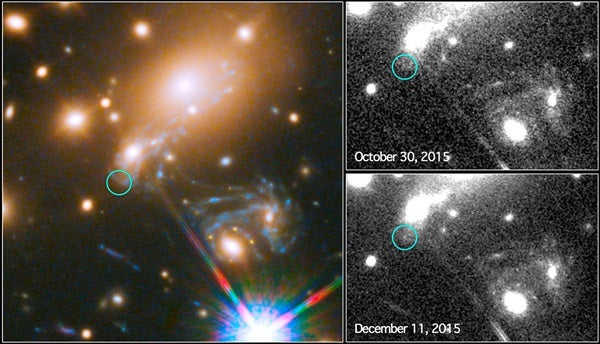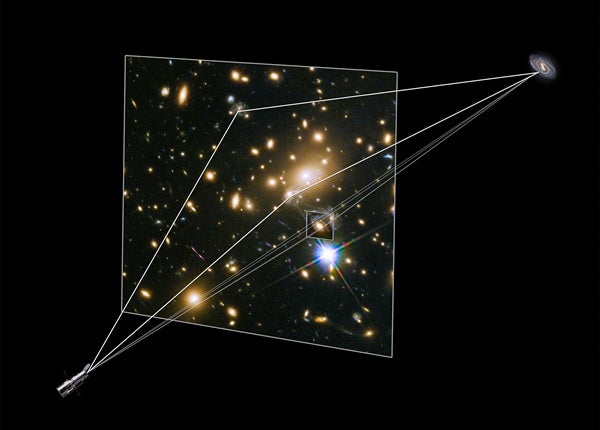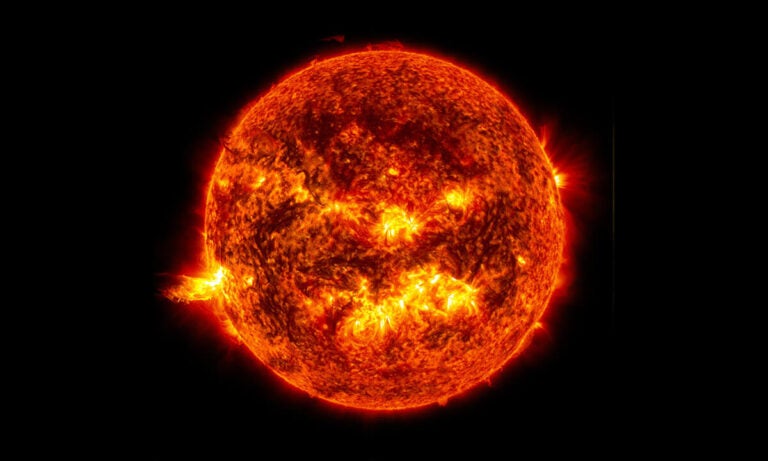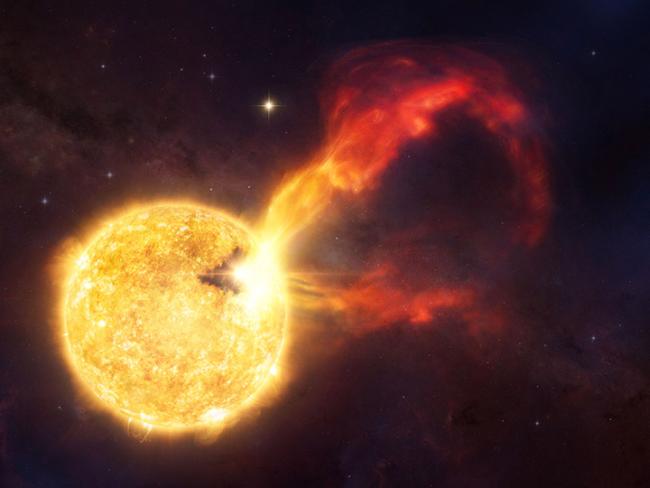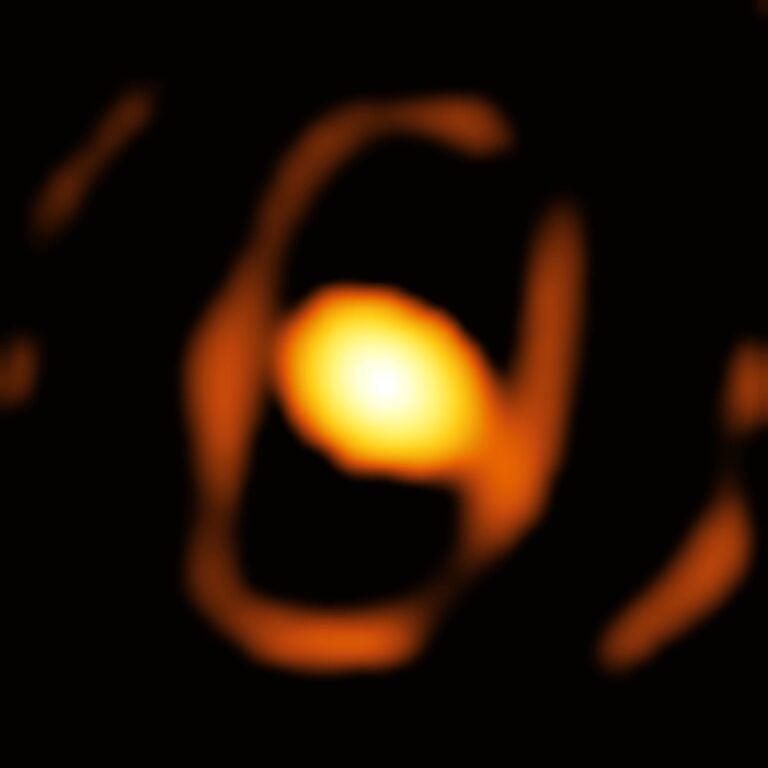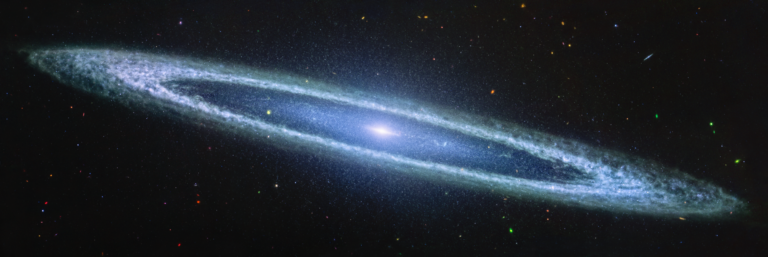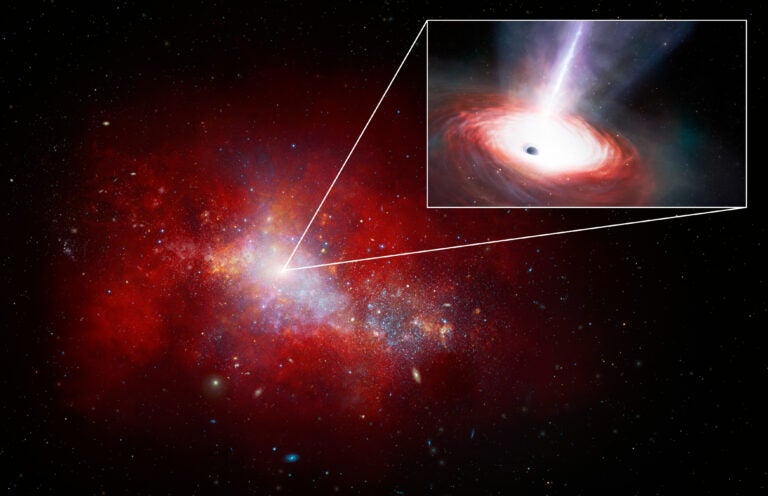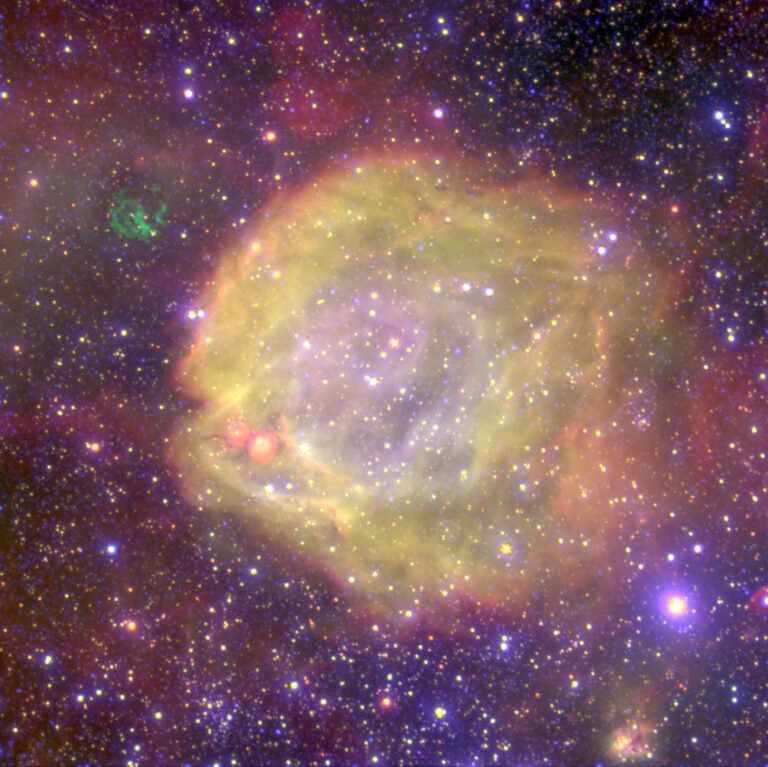The top right image shows Hubble observations from October 2015 before the supernova’s recent appearance. The lower right image shows the discovery of the Refsdal Supernova on 11 December 2015, as predicted by several different models.
The supernova, nicknamed Refsdal, has been spotted in the galaxy cluster MACS J1149.5+2223. While the light from the cluster has taken about five billion years to reach us, the supernova itself exploded much earlier, nearly 10 billion years ago.
Refsdal’s story began in November 2014 when scientists spotted four separate images of the supernova in a rare arrangement known as an Einstein Cross around a galaxy within MACS J1149.5+2223. The cosmic optical illusion was due to the mass of a single galaxy within the cluster warping and magnifying the light from the distant stellar explosion in a process known as gravitational lensing.
“While studying the supernova, we realized that the galaxy in which it exploded is already known to be a galaxy that is being lensed by the cluster,” explains Steve Rodney, co-author, from the University of South Carolina. “The supernova’s host galaxy appears to us in at least three distinct images caused by the warping mass of the galaxy cluster.”
These multiple images of the galaxy presented a rare opportunity. As the matter in the cluster — both dark and visible — is distributed unevenly, the light creating each of these images takes a different path with a different length. Therefore the images of the host galaxy of the supernova are visible at different times.
Using other lensed galaxies within the cluster and combining them with the discovery of the Einstein Cross event in 2014, astronomers were able to make precise predictions for the reappearance of the supernova. Their calculations also indicated that the supernova appeared once before in a third image of the host galaxy in 1998 — an event not observed by any telescope. To make these predictions they had to use some very sophisticated modelling techniques.
“We used seven different models of the cluster to calculate when and where the supernova was going to appear in the future. It was a huge effort from the community to gather the necessary input data using Hubble, VLT-MUSE, and Keck and to construct the lens models,” explains Tommaso Treu, lead author of the modelling comparison paper, from the University of California at Los Angeles, USA. “And remarkably all seven models predicted approximately the same time frame for when the new image of the exploding star would appear”
“Hubble has showcased the modern scientific method at its best,” comments Patrick Kelly, lead author of the discovery and re-appearance papers and co-author of the modelling comparison paper from the University of California Berkeley, USA. “Testing predictions through observations provides powerful means of improving our understanding of the cosmos.”
The detection of Refsdal’s reappearance served as a unique opportunity for astronomers to test their models of how mass — especially that of mysterious dark matter — is distributed within this galaxy cluster. Astronomers are now eager to see what other surprises the ongoing Hubble Frontier Fields program will bring to light.

